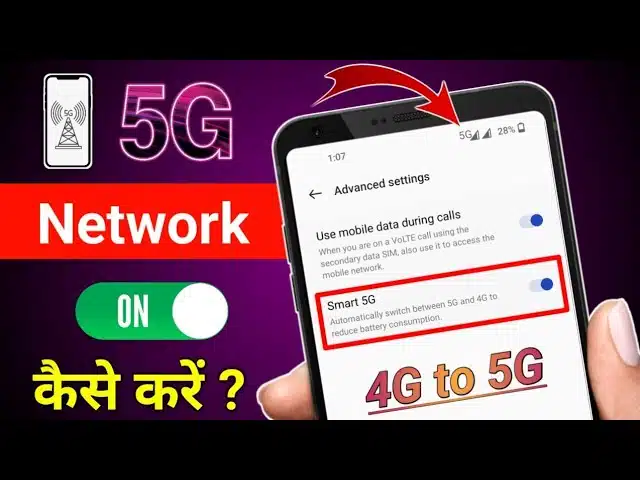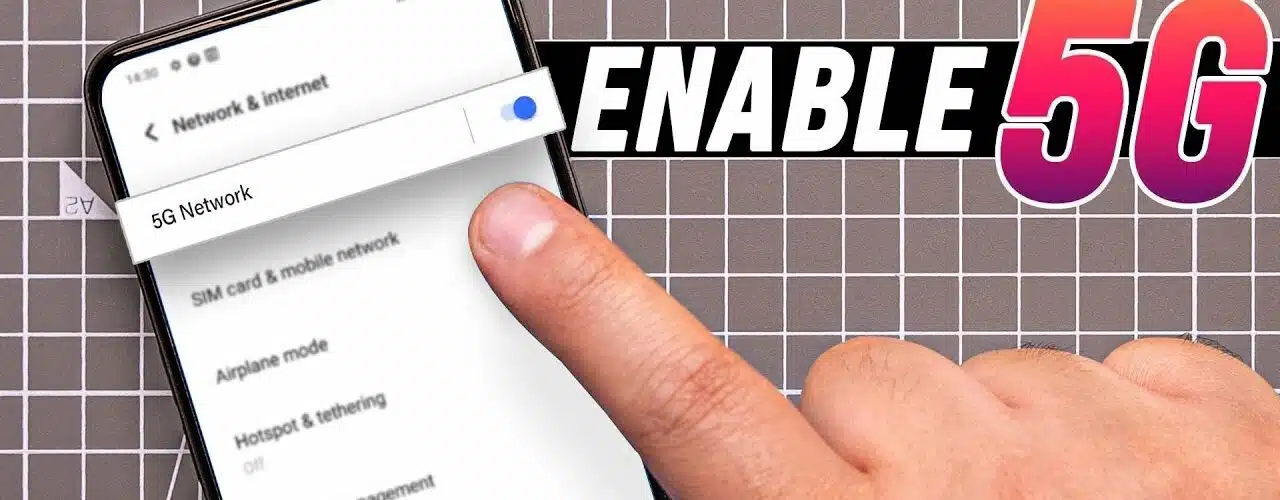Table of Contents
How to Connect 5G Network In Mobile Devices?
How To Connect 5G Network In Mobile? If your phone isn’t connecting to 5G, there are a few things you can try. One is to check your cellular data settings.
Another is to restart your phone. This is an easy fix and should work most of the time.
Finally, you can also update your phone’s operating system. This will help to fix any problems that may be preventing your phone from connecting to the 5G network.
1. Check the APN Settings:
If you’re in an area that’s supposed to have 5G and your device supports it, but it still isn’t connecting, the problem may be with your network settings. Changing these can fix the issue and give you access to the 5G network.
You can find the network mode settings in the phone’s Settings app. In the “Network & Internet” or “Wireless & networks” section, select “Mobile network”. Then, find the APN settings and enter the information for your carrier. Make sure you write it exactly how it’s shown because a missing space or misspelled word could ruin everything.
Once you’ve entered the correct information, tap Save APN. Your phone will lose its data connection for a short while as it connects to the new network. Once this is complete, you should be able to access the 5G network with ease. If the new APN doesn’t work, try restarting your phone. This will reset the network connections and can sometimes fix problems that wouldn’t otherwise go away. Then, you can change back to the previous APN settings if necessary.
2. Reboot:
A mobile device that is having trouble connecting to 5G could be experiencing some temporary issues. If this is the case, then one of the best things that a user can do is to reboot their device. This may take several minutes before everything loads back up, but it is one of the easiest and most effective solutions that a user can try.
To do this, users can open their settings and go to cellular/mobile data or network. Here, they can select the preferred network type and make sure that it is set to 5G. They can also check their connection speed with a cellular speed test app to see whether or not the device is able to connect to a 5G network.
Another thing that a user can try is to update their phone’s operating system. If they don’t have the latest version of their OS, then this might be the reason why their mobile device is having trouble connecting to 5G. If none of these tips work, then the user might want to call their carrier’s customer support and ask for assistance.
3. Update Your Phone’s Operating System:
Aside from the APN settings, your phone’s operating system is another factor that can affect a 5G connection. While OS updates are usually meant to fix bugs and improve performance, in this case, they can help you resolve issues related to 5G connectivity.
If you’re using an older device, it might not support 5G connections. To be able to connect to a 5G network, your phone must have specific hardware installed. Check the official device specifications for more information. This information can be found on your smartphone’s box or by searching the model number online (e.g., GSMArena or Google).

Once you’ve updated your phone’s operating system, try switching your network mode to 5G. You can do this by going to the Settings menu and tapping on “Network & Internet” or “Mobile data”. From there, you can select the preferred network type – either 5G or LTE. Note that 5G uses a different frequency band than other networks, so it may consume more data. Be sure to check your carrier’s data plans and see if they include 5G coverage.
4. Turn on Airplane Mode:
Once 5G is available for you, it will be a great experience with lightning-fast speeds comparable to fiber internet. However, it is not uncommon to run into problems connecting to the network, especially with older devices. There are a few simple ways to fix this issue.
Airplane Mode is a feature that puts any phone functions that use radio frequency signal transmissions into hibernation mode. This includes Wi-Fi, Bluetooth, and phone data. However, features that do not use these signals (such as GPS or music players) will still work. This solution is especially useful if you are experiencing connection issues on a new device or when you’re traveling.
Depending on your carrier and device, you may be able to force your phone to stay on the 5G network. This will be an option under the “Network mode” or “Preferred network type” settings in your phone’s settings. This will vary by manufacturer and Android version, so check out our guides for more information. Once you have a working connection, you can then monitor your mobile data usage to see how much you’ve consumed or whether there’s any leftover cellular data to utilize.
5. Reset Your Phone:
Sometimes, a phone will go into a power-saving mode to conserve battery life. This is a great way to help you get more out of your device. However, it can sometimes disable fancy yet power-hungry features such as 5G.
To force your iPhone to stay on the 5G network, open the Settings app and go to Cellular Data Options – Voice & Data – Preferred network type. From here, select either 5G only or a 5G Auto option. You can also force your Android to stick with 5G or LTE, but the steps to do so will vary between each manufacturer and carrier.
If you have tried all of these tips and are still experiencing trouble connecting to the 5G network, it may be time to call your wireless provider’s customer service. A representative should be able to help you resolve the problem and get you back up and running on your 5G network! Just be sure to back up your phone before resetting it. Otherwise, all of your data will be erased. Also, resetting your phone can erase all of the apps on it, including the 5G app you installed earlier!





Add comment